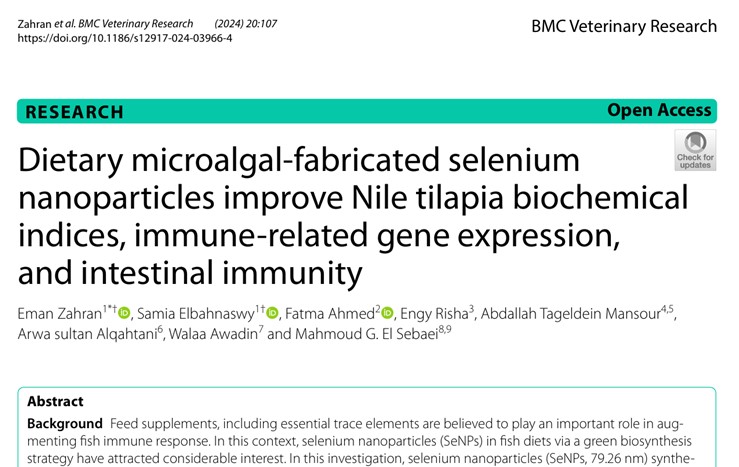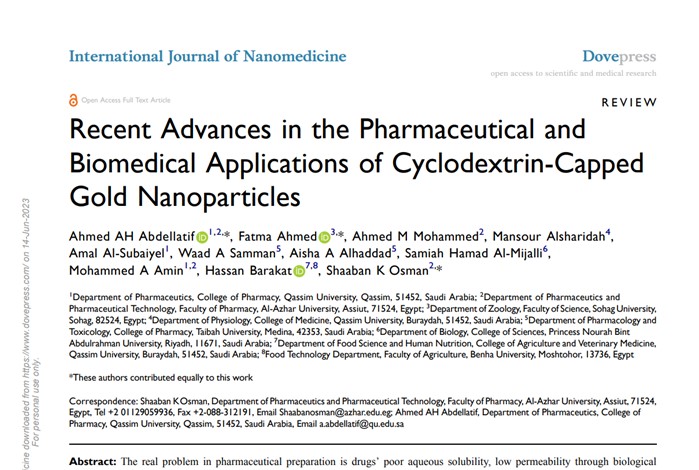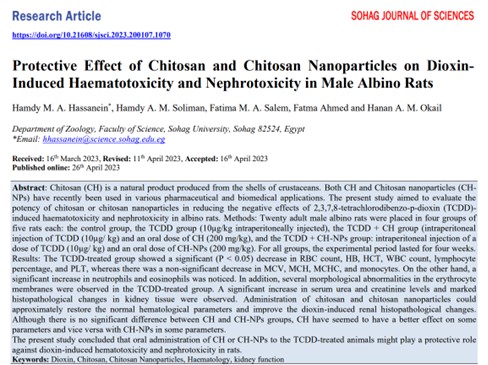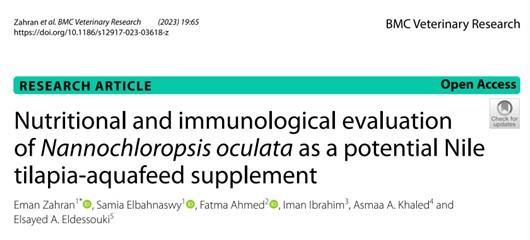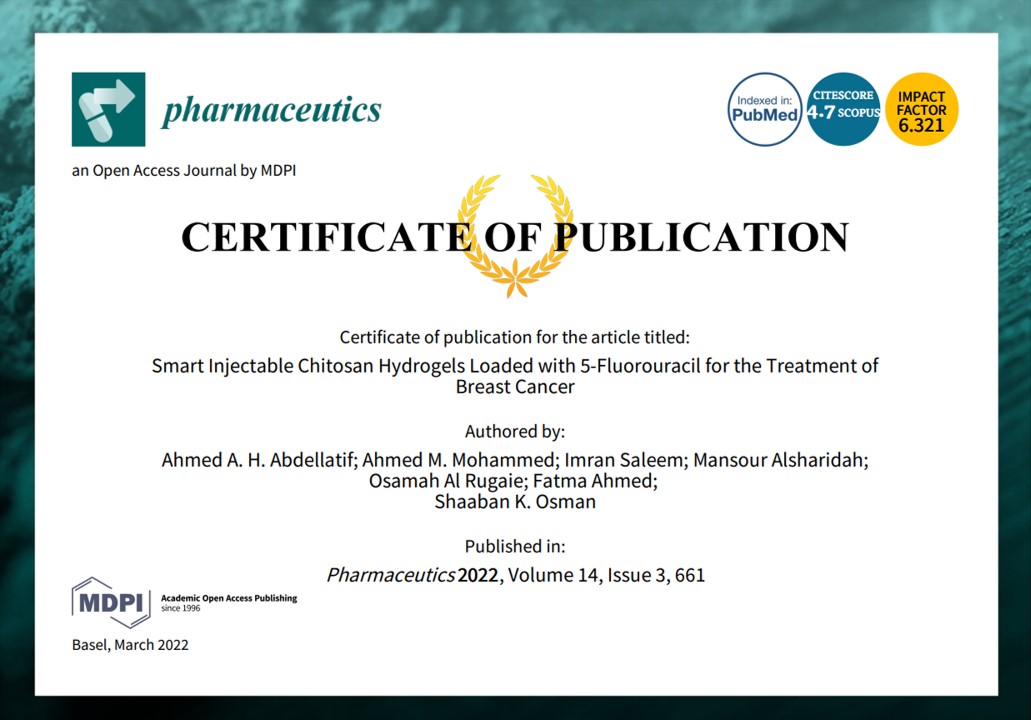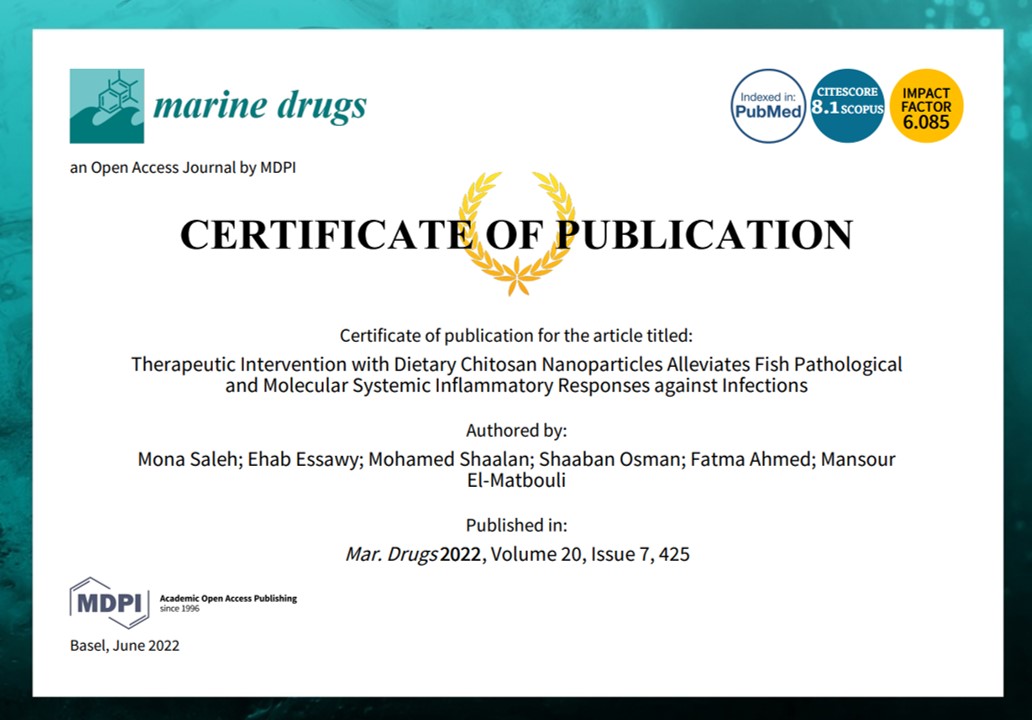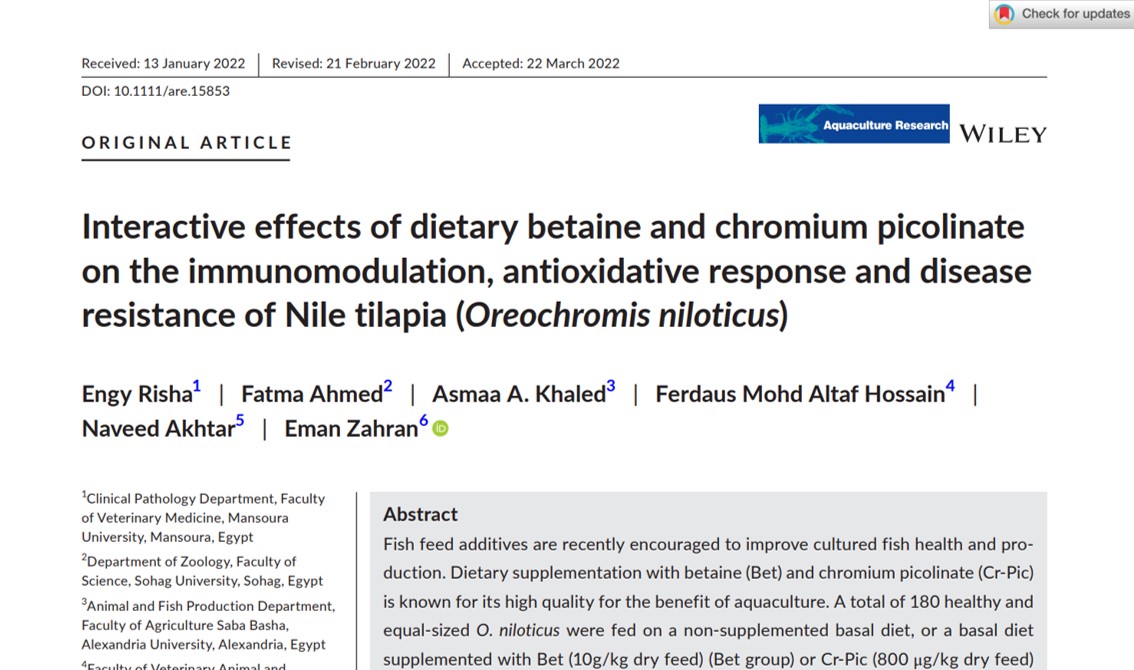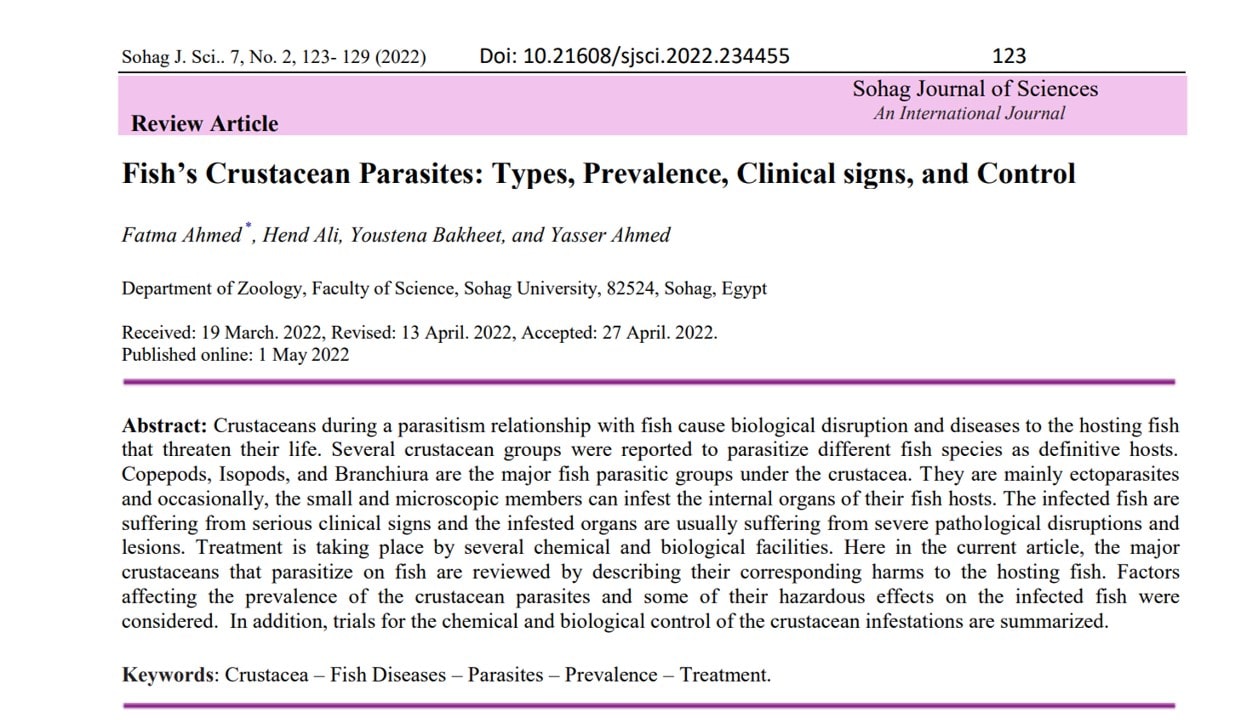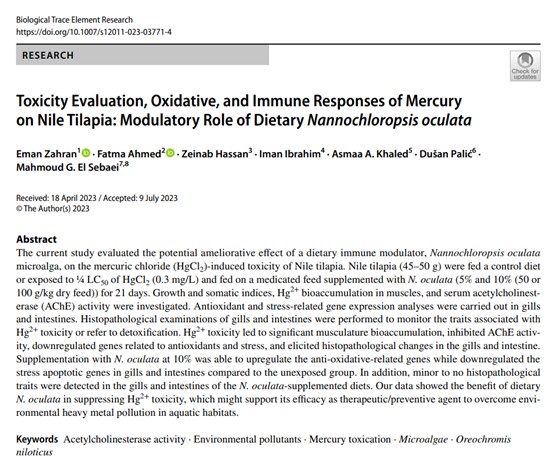Background Feed supplements, including essential trace elements are believed to play an important role in augmenting fish immune response. In this context, selenium nanoparticles (SeNPs) in fish diets via a green biosynthesis strategy have attracted considerable interest. In this investigation, selenium nanoparticles (SeNPs, 79.26 nm) synthesized from the green microalga Pediastrum boryanum were incorporated into Nile tilapia diets to explore ...
Read more


